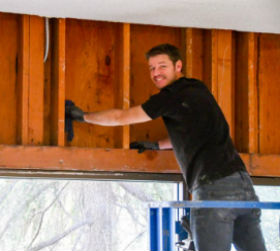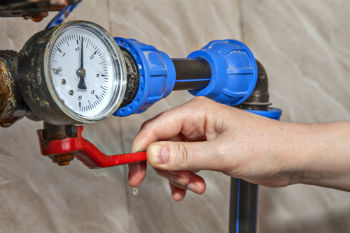Renewing Your Space: The Ultimate Overview to Water Damages Remediation
Are you dealing with water damages in your area? From identifying the indicators of water damage to repairing and protecting against future damage, we'll walk you through each step.
Recognizing the Signs of Water Damage
If you see blemished walls or see a stuffy odor, it's likely an indicator of water damages. Water damages can happen in various types, and it is necessary to be able to determine the signs beforehand to avoid additional damage. One typical indicator of water damages is the existence of discolorations or patches on your walls. These patches may appear darker or yellow-colored and can be triggered by water seeping with the wall surfaces. Furthermore, if you discover paint peeling or bubbling, it could be an indicator of water damage below the surface area. Another dead giveaway is a mildewy or wet smell in your home. This smell is frequently brought on by mold or mildew growth, which grow in damp settings. If you spot this odor, it's crucial to explore the resource and resolve any kind of water damages immediately. Other signs to watch out for consist of deformed or drooping floors, puffy or blemished baseboards, and the existence of mold and mildew or mold on surfaces. By being attentive and acknowledging these indications, you can take the essential steps to resolve water damage and restore your area to its previous glory.
Examining the Degree of the Damages
Analyzing the degree of damages can help identify the needed actions for repair. When water damages occurs, it is vital to thoroughly assess the situation to recognize the scope of the damage. Begin by evaluating the affected locations, such as walls, ceilings, floorings, and furniture. Try to find noticeable signs of water damage, such as discoloration, bending, or mold and mildew development. Use your hands to really feel for any kind of wetness or soft qualities in the products. It is additionally vital to examine for covert damages, such as behind wall surfaces or under flooring. This can be done making use of wetness meters or infrared video cameras to identify any type of moisture that may not show up to the nude eye.
Once you have examined the extent of the damages, you can identify the necessary steps for reconstruction. If the damages is very little and constrained to a small area, you might be able to take care of the remediation process yourself. Nonetheless, if the damages is substantial or involves structural elements, it is suggested to look for expert assistance. Repair experts have the proficiency and equipment to effectively minimize the damage and recover your room to its pre-damaged condition.
Eliminating Standing Water and Drying Out Out the Room

When you have actually drawn out as much water as feasible, it's time to concentrate on drying the click for source space. Open up home windows and doors to boost air movement and ventilation. Usage followers and dehumidifiers to accelerate the drying process. mold removal La Mesa CA. Placement them tactically, directing the air flow in the direction of the damp areas. If the climate allows, take into consideration making use of natural sunlight to assist in drying out.
Display the moisture degrees and dampness content regularly. Purchase a moisture meter to accurately evaluate the progress. Keep in mind that drying an area may take numerous days or perhaps weeks, depending upon the Click This Link extent of the water damage.
Repairing and Recovering Damaged Frameworks and Materials
You can start repairing and restoring broken frameworks and products by examining the level of the damage. Take a mindful appearance around your area and recognize any kind of locations that have been impacted by the water. This could consist of walls, floors, ceilings, furniture, and any type of other products that have actually been exposed to water (water damage restoration near me La Mesa CA). Pay interest to signs of warping, discoloration, or mold growth. Once you have a clear understanding of the damages, you can start the restoration procedure.
Begin by eliminating any damp or broken materials. This may involve tearing out damp drywall, getting rid of water logged rug, or disposing of destroyed furnishings. Make certain to wear protective equipment, such as gloves and a mask, to avoid contact with any type of possibly unsafe materials.
Next, completely completely dry out the room to avoid more damages and the growth of mold. Use fans, dehumidifiers, and open windows to advertise air movement and speed up the drying out procedure. It is essential to address any kind of remaining moisture to avoid future issues.
After the space is totally dry, you can begin repairing and changing damaged products. This may involve patching holes in the walls, refinishing wood floors, or painting surface areas. If required, talk to professionals to ensure correct repairs and reconstruction.
Stopping Future Water Damages and Maintaining a Healthy And Balanced Space
When the room is entirely dry, it is very important to take actions to stop future water damage and keep a healthy and balanced setting. Start by dealing try this site with any kind of underlying issues that may have caused the water damage to begin with. Look for leaking pipes, malfunctioning plumbing, or poor drainage systems. Dealing with these concerns will help stop future water damage and make sure the durability of your area.
These measures will assist stop water buildup and prospective damages to your building. Clear away any kind of particles that may obstruct the flow of water and cause it to overflow.

Final Thought
By recognizing the signs of water damages, evaluating the degree of the damage, getting rid of standing water, and fixing and bring back broken frameworks, you can renew your space. Go in advance, take on that water damages and develop a stunning and secure area when again.